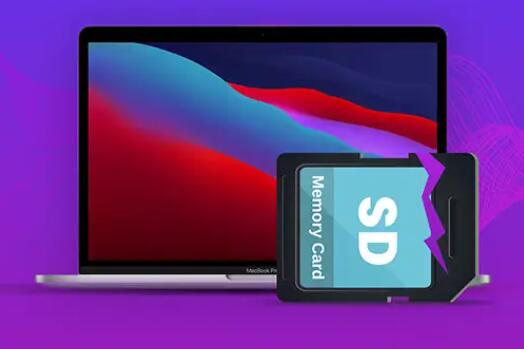1. SD Card Corruption
Causes of Corruption
SD card corruption can occur due to various reasons, including:
Improper Ejection: Removing the card without safely ejecting it can lead to file system corruption.
Power Failures: Sudden power loss during data transfer can corrupt the files on the card.
Physical Damage: Dropping or exposing the SD card to moisture can damage its structure.
Virus or Malware: Malicious software can corrupt files on the SD card.
Overuse or Wear and Tear: Frequent writing and deleting data can lead to corruption over time.

Symptoms of Corruption
Common signs that an SD card is corrupted include:
Files appearing as corrupted or unreadable.
Error messages when trying to access the card.
Inability to format the card.
Missing files or folders.
2. Initial Troubleshooting Steps
Before diving into recovery methods, it’s essential to perform some initial troubleshooting.
Checking the SD Card
Visual Inspection: Check for physical damage. Look for cracks or bent pins.
Clean Contacts: Gently wipe the gold contacts on the card with a soft cloth.
Using a Different Device
Try Another Device: Insert the SD card into a different camera, computer, or card reader to see if it can be accessed.
Check Compatibility: Ensure the device supports the SD card type (e.g., SDHC, SDXC).
Inspecting the Card Reader
Test Another Reader: If using a card reader, try a different one to rule out reader issues.
Check USB Ports: Use a different USB port on your computer.
Checking for File System Errors
Using Windows Check Disk Tool:
Insert the SD card.
Open Command Prompt as an administrator.
Type chkdsk X: /f (replace X with the drive letter of your SD card).
Follow the prompts.
Using macOS Disk Utility:
Open Disk Utility.
Select the SD card and click “First Aid.”
Follow the prompts to repair the disk.
3. Recovering Data from a Corrupted SD Card
If troubleshooting doesn’t help, you can use various methods to recover your pictures.
Method 1: Using Built-in Windows Tools
Windows Explorer Recovery:
Connect the SD card to your computer.
Open File Explorer.
Look for the SD card under “This PC.”
Try to open the folder containing your images.
Using Windows Backup:
If you had previously enabled File History or System Restore, check if any backups exist that contain the pictures.
Method 2: Third-Party Recovery Software
Panda Assistant supports a wide range of file systems, making it compatible with various devices and operating systems. This flexibility means you can recover files from FAT32. NTFS, exFAT, and other formats without hassle. Additionally, it features a preview function, allowing users to view recoverable files before proceeding with the recovery process. This ensures you only restore the files you need, optimizing your recovery efforts.
Another critical aspect of Panda Assistant is its ability to handle complex data loss scenarios. Whether your files were accidentally deleted, lost due to formatting, or rendered inaccessible due to corruption, Panda Assistant is equipped to tackle these challenges. The software’s deep scan capability ensures that even files that seem permanently lost can often be recovered, providing peace of mind in stressful situations.
Moreover, Panda Assistant emphasizes data security and integrity throughout the recovery process. The software is designed to recover files without overwriting existing data, minimizing the risk of further loss.
Method 3: Professional Data Recovery Services
If the data is critical and the software methods fail, consider professional data recovery services. These services can be costly but are often successful in retrieving lost data.
Look for a Reputable Service: Research and read reviews of data recovery companies.
Inquire About Pricing: Most services provide a free evaluation and quote for recovery.
Avoid DIY Methods: Opening the SD card or using unverified software may worsen the situation.
4. Preventing Future Data Loss
Once you recover your pictures, take steps to prevent future data loss:
Proper Ejection Practices
Always safely eject your SD card using the device’s software or operating system to avoid corruption.
Regular Backups
Regularly back up your data to an external hard drive or cloud storage to ensure you have copies in case of failure.
Using Reliable SD Cards
Invest in high-quality SD cards from reputable brands. Avoid cheap, unbranded cards, which may be more prone to failure.
Recovering pictures from a corrupted SD card can be a stressful experience, but by following the outlined steps, you can increase your chances of success. Start with basic troubleshooting and progress to software tools or professional services if needed.
Always remember to back up your data regularly and handle your SD cards with care to minimize the risk of future corruption. By being proactive, you can protect your valuable memories and data.
About us and this blog
Panda Assistant is built on the latest data recovery algorithms, ensuring that no file is too damaged, too lost, or too corrupted to be recovered.
Request a free quote
We believe that data recovery shouldn’t be a daunting task. That’s why we’ve designed Panda Assistant to be as easy to use as it is powerful. With a few clicks, you can initiate a scan, preview recoverable files, and restore your data all within a matter of minutes.
Subscribe to our newsletter!
More from our blog
See all postsRecent Posts
- Dell backup and recovery windows 11 2025-04-21
- Dell os recovery tool keeps crashing 2025-04-21
- Raw hdd data recovery 2025-04-21

 Try lt Free
Try lt Free Recovery success rate of up to
Recovery success rate of up to









